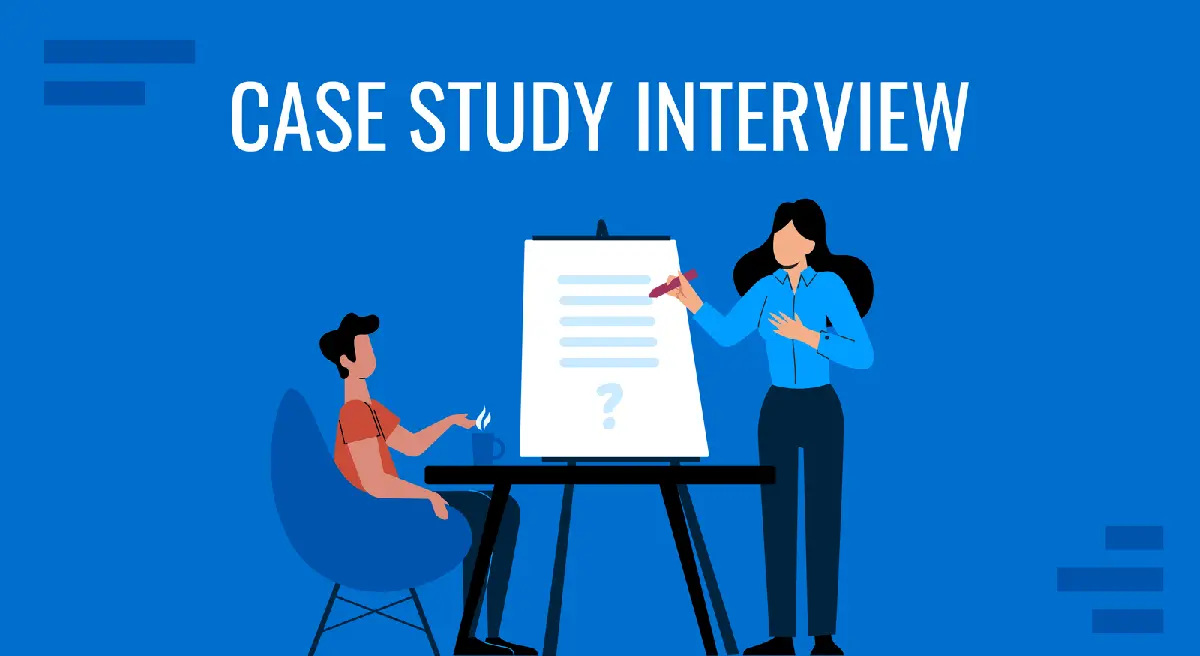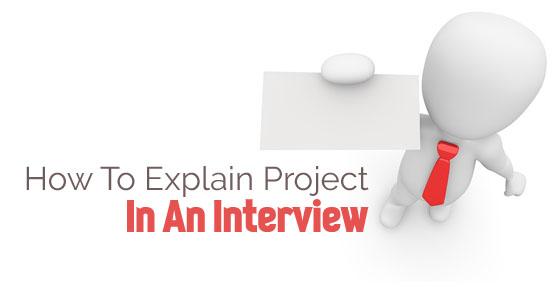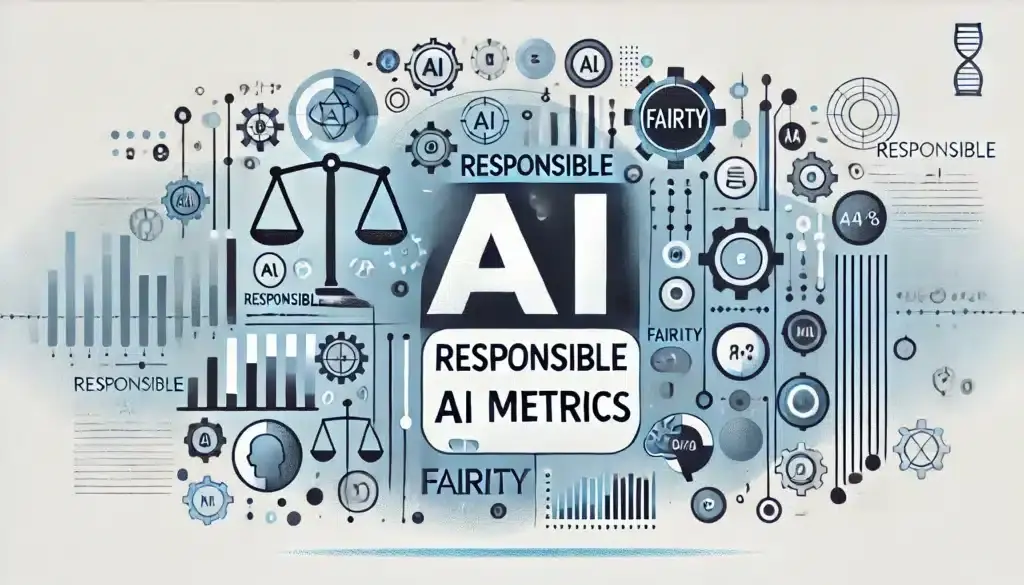Introduction: Why ML Case Study Presentations Are the Real Test of Modern AI Interview Readiness
If coding interviews reveal how you think, ML case studies reveal how you work.
In 2025, almost every top-tier company, from Google DeepMind and Anthropic to OpenAI and Tesla, has adopted a case study or project walkthrough round as part of their ML engineering interview process. You might still have to code on a whiteboard, but what truly separates engineers who get offers from those who don’t is the ability to tell a coherent story about their past work.
This round isn’t about proving that you can build a model. It’s about demonstrating that you can take an ambiguous problem, turn it into a structured experiment, and communicate measurable results in a way that connects with both technical reviewers and business stakeholders.
That’s where most candidates fail.
They talk endlessly about architectures, hyperparameters, and loss functions, but forget to explain why any of it mattered. The hiring panel, often a mix of applied scientists, PMs, and data engineers, walks away thinking, “Smart, but can they drive impact?”
Your job during a case study presentation is not to impress with jargon. It’s to guide your audience through your reasoning process, how you framed the problem, explored data, tested hypotheses, and made trade-offs that mattered to users or the business.
Done right, this round becomes your biggest advantage.
A structured, clear, and outcome-driven presentation transforms your technical depth into visible leadership signal, something every FAANG hiring committee looks for in senior or full-stack ML engineers.
That’s why we’ve built this guide.
Using Interview Node’s experience preparing hundreds of engineers for FAANG, OpenAI, and startup interviews, we’ll walk you through a step-by-step framework for presenting ML case studies that stand out.
By the end, you’ll know exactly how to:
- Turn technical projects into narratives that resonate.
- Quantify your results like a product owner.
- And handle the toughest follow-ups with confidence.
Because in today’s interview world, storytelling is the new debugging.
Section 1: What Interviewers Look for in ML Case Studies
Before you start preparing your slides or walking through your Kaggle-inspired project, it’s critical to understand what interviewers are really looking for in an ML case study presentation. Spoiler: it’s not just accuracy metrics or model performance.
FAANG and AI-first companies use ML case studies to measure something far deeper, your end-to-end ownership and product thinking. The technical part (algorithms, models, pipelines) matters, but it’s only one layer of the evaluation. What the panel truly wants to see is your thinking process and your ability to connect technical work to business impact.
a. Evidence of Ownership
Interviewers are trained to detect how much of the project you actually led. Did you design the approach? Did you manage data pipelines? Did you handle stakeholder feedback or model deployment?
Merely saying “we built an ensemble model” doesn’t show ownership. But saying “I led the retraining pipeline that reduced false positives by 18% and improved customer retention by 3%” does.
Ownership isn’t about taking credit, it’s about showing accountability, autonomy, and initiative. These are the traits that make you scalable as an engineer.
b. End-to-End Thinking
Companies like Google and Amazon explicitly look for candidates who can explain the full ML lifecycle, from defining the problem to monitoring the deployed model.
The case study round is where you prove you can connect data, models, and user experience in one coherent story.
For example:
- How did you translate a vague product request into a measurable ML problem?
- What trade-offs did you make between speed, interpretability, and performance?
- How did you measure success post-deployment?
These questions help the panel see if you can bridge the gap between research experimentation and production reliability.
c. Communication Clarity
You might have built something incredible, but if you can’t explain it clearly, it’s invisible to the hiring committee.
The best ML case study presenters are storytellers. They balance technical precision with plain-language clarity, ensuring even non-ML interviewers grasp the value.
As highlighted in Interview Node’s guide “Why ML Engineers Are Becoming the New Full-Stack Engineers”, the modern ML engineer isn’t just a model builder, they’re an end-to-end problem solver who codes, designs, deploys, and communicates.
Your case study is your chance to prove you can do all four.
Section 2: The Case Study as a Story-Turning Projects into Narratives
One of the most common mistakes ML engineers make is treating case studies like technical reports instead of stories. They dump details, models used, data cleaned, hyperparameters tuned, but forget that interviewers are human beings trying to follow a narrative thread.
The best candidates know this: every strong ML case study tells a story.
a. Why Storytelling Works in Technical Interviews
Storytelling activates empathy, context, and retention.
When you tell your case study as a structured journey, problem → exploration → decisions → impact, the panel stays engaged and remembers your key contributions.
It also subconsciously demonstrates leadership and communication skills, the same traits companies value in senior and staff-level engineers.
The reality is, interviewers aren’t looking for all the details. They’re looking for why you made the decisions you made.
When you explain the “why,” you showcase judgment under ambiguity, one of the top competencies FAANG interviewers are trained to measure.
b. The Data → Insight → Impact Arc
Here’s a storytelling framework that works in almost every case study presentation:
- Data: Describe the origin and nature of your data. What problem did it represent? What limitations or biases did you uncover?
- Insight: Share what your analysis or modeling revealed. Did you uncover surprising trends, patterns, or bottlenecks?
- Impact: Close with the measurable result, ideally in business or user terms.
For example:
“We analyzed user drop-off data, found that 40% of churn came from slow recommendations, built a real-time ranking model, and reduced latency by 22%, improving session retention.”
That’s a story. It’s concise, clear, and connects technical work to human outcomes.
c. Show Decisions, Not Just Outcomes
The heart of your narrative lies in decisions.
Interviewers want to see:
- How you prioritized trade-offs.
- Why you rejected one path and chose another.
- How you balanced model complexity with business constraints.
Each decision you explain gives interviewers a “signal” about your reasoning, autonomy, and technical maturity.
As explained in Interview Node’s guide “Quantifying Impact: How to Talk About Results in ML Interviews Like a Pro”, storytelling is what turns your hard work into perceived impact.
When you learn to present case studies as narratives, your results don’t just sound smart, they sound strategic.
Section 3: Step 1-Framing the Problem
Every impressive ML case study starts with a well-framed problem statement.
This is where most candidates go wrong, they jump straight into modeling and data pipelines, skipping the most critical part: defining why the project mattered in the first place.
Interviewers don’t just want to know what you built, they want to understand what problem you were solving and why it was important.
a. Start with “Why,” Not “What”
When introducing your case study, your first 60 seconds should answer three core questions:
- Who had the problem (customer, system, business unit)?
- What was the impact of that problem?
- Why was solving it meaningful (in terms of business, users, or efficiency)?
Example:
“Our fraud detection model was flagging too many legitimate users, leading to a 10% drop in customer retention. I led an initiative to reduce false positives while maintaining high recall.”
That single sentence gives context, motivation, and measurable stakes.
b. Translate Ambiguity into Clarity
Top interviewers want to see your ability to translate vague business objectives into structured ML problems.
For example:
A PM might say, “We need better product recommendations.”
A strong ML engineer reframes that into:
“We need to maximize user engagement by optimizing for click-through rate and dwell time across new and returning users.”
This shows strategic and analytical thinking, a key “signal” interviewers are trained to detect.
c. Define Clear Success Metrics
From the start, define what success looks like, precision, recall, F1 score, latency reduction, or user adoption.
If you don’t, your project sounds incomplete.
Even if you didn’t hit your target, showing how you measured progress demonstrates maturity and realism.
d. Avoid the “Data Dump” Trap
Don’t start with “We had 10 million rows and used XGBoost.”
Start with why the data mattered. Numbers impress less than purpose.
By showing structured framing, you prove you’re not just a coder, you’re a product-minded ML engineer who aligns technology with business outcomes.
As noted in Interview Node’s guide “The Psychology of Interviews: Why Confidence Often Beats Perfect Answers”, confident communication comes from clarity, not memorization. Framing your problem well gives you that clarity and earns interviewer trust from the first minute.
Section 4: Step 2-Data Understanding and Feature Engineering
Once you’ve framed your problem clearly, the next step in your ML case study presentation is to demonstrate your mastery over data, understanding it, cleaning it, and shaping it for impact.
This is where your interviewer starts evaluating your depth as an engineer, not just your familiarity with tools.
It’s also one of the easiest places to stand out, because most candidates simply say, “I cleaned the data and engineered features.”
That sentence adds zero value.
Your goal here is to show curiosity, structure, and trade-off awareness.
a. Demonstrate Data Intuition, Not Just Pre-processing
Before you mention Pandas or Spark, tell a story about what the data represented and what insights it revealed.
For example:
“We worked with time-series sensor data from EV charging stations. I noticed missing intervals correlated with hardware downtime, which helped us separate device errors from true user inactivity.”
This level of observation signals data intuition, something interviewers at companies like Meta, Tesla, and OpenAI value deeply.
It shows you didn’t just accept the data, you questioned it intelligently.
b. Feature Engineering = Thinking in Hypotheses
Strong candidates explain feature creation like scientific reasoning, not mechanical transformation.
Example:
“We hypothesized that user engagement frequency in the last 7 days was more predictive than total session count, so we created rolling window features to test that.”
That sentence demonstrates:
- Hypothesis-driven exploration.
- Awareness of causality vs. correlation.
- Understanding of signal-to-noise trade-offs.
These are high-signal behaviors interviewers are trained to detect.
c. Don’t Hide Data Challenges-Explain How You Solved Them
If your dataset was messy, biased, or incomplete, that’s not a weakness. It’s a chance to show resilience and problem-solving.
Talk about how you handled class imbalance, data drift, or noise reduction.
Even mentioning, “We used SMOTE to balance classes but monitored for synthetic feature inflation,” tells the interviewer you think critically.
d. Tie Data Work to the Business Objective
Every preprocessing choice you make should connect back to your problem framing.
If you filtered records or limited features, explain why it improved interpretability or latency.
This shows you’re not optimizing for Kaggle, you’re optimizing for production and users.
As highlighted in Interview Node’s guide “ML Interview Tips for Mid-Level and Senior-Level Roles at FAANG Companies”, mature ML engineers distinguish themselves not by the tools they use, but by the reasoning behind their data decisions.
Show that reasoning, and you’ll convert your data prep phase into a clear signal of expertise.
Section 5: Step 3-Modeling Strategy and Experimentation
This is where most candidates start, but great candidates arrive here after setting the stage with a clear problem and deep data understanding.
The modeling phase isn’t about showing how many algorithms you know; it’s about demonstrating judgment, experimentation rigor, and trade-off awareness.
Interviewers don’t want a machine learning textbook, they want to see how you think like an engineer who builds models that matter.
a. Explain the “Why” Behind Your Model Choices
Don’t just list models; justify them.
For example:
“We started with logistic regression to establish a baseline, then moved to gradient boosting once we confirmed non-linear relationships in the features.”
That sentence reveals more maturity than rattling off five algorithms. It tells your interviewer that you test hypotheses systematically, not impulsively.
If your company required explainability (e.g., in finance or healthcare), mention how that shaped your model decisions. This demonstrates context-aware modeling, a key FAANG evaluation signal.
b. Talk About Your Experimentation Framework
Interviewers love hearing structure.
Describe how you tested multiple models efficiently:
- Did you use cross-validation, hyperparameter optimization, or experiment tracking tools like MLflow or Weights & Biases?
- How did you prevent overfitting or data leakage?
For example:
“We used stratified 5-fold validation to ensure stable results across demographics, and tracked metrics in MLflow to compare experiments reproducibly.”
That shows reproducibility, something top-tier interviewers are trained to spot immediately.
c. Show That You Understand Trade-Offs
Every ML choice is a trade-off: accuracy vs. latency, precision vs. recall, interpretability vs. complexity.
Discussing these trade-offs out loud signals depth.
For example:
“While XGBoost improved recall by 4%, inference time doubled, so we deployed a lightweight logistic model for real-time predictions.”
That line alone demonstrates system thinking, proof that you’re ready to work in production environments.
d. Focus on Learnings, Not Perfection
If your best model didn’t outperform the baseline, don’t hide it.
Explain why and what you learned.
“The deep model overfit due to sparse categorical data, leading us to simplify and improve generalization.”
Owning your iteration process is far more impressive than pretending everything worked flawlessly.
As explained in Interview Node’s guide “Mastering the Amazon ML Interview: A Strategic Guide for Software Engineers”, modeling isn’t scored on brilliance, it’s scored on discipline and insight.
Show that you experiment like a scientist and reason like an engineer, and you’ll hit every key evaluation signal in this phase.
Section 6: Step 4-Evaluation, Results, and Business Impact
This is the moment that separates a technically solid candidate from a hire-ready engineer.
It’s not enough to train a great model, you must communicate its impact clearly, concisely, and persuasively.
FAANG and top AI startups don’t evaluate models in isolation. They evaluate outcomes, did your work move a key business or user metric? Did you make trade-offs intentionally? Could your results be trusted, reproduced, and scaled?
Your evaluation section should prove that you understand both technical performance and real-world consequence.
a. Start With a Clear Metric Story
Don’t just say, “We achieved 93% accuracy.”
Contextualize it:
“Our baseline recall was 70%. After refining features and tuning thresholds, we improved recall to 87% while reducing false positives by 15%, directly cutting operational review time by 25%.”
That statement tells the interviewer what improved, how, and why it mattered.
b. Demonstrate Multi-Metric Thinking
FAANG interviewers love candidates who think beyond one number.
Talk about how you balanced different metrics, accuracy, F1, ROC-AUC, latency, or cost, based on the problem.
For instance:
“We realized optimizing solely for precision hurt recall significantly, so we implemented a cost-sensitive loss function to achieve a better business balance.”
This shows sophistication, you understand that metrics serve goals, not the other way around.
c. Link Technical Results to User or Business Outcomes
Every evaluation should close the loop with impact.
If possible, translate your improvements into tangible outcomes:
- Faster model inference = better user experience.
- Fewer false positives = cost savings or higher retention.
- Higher engagement = better personalization or revenue lift.
Even if you can’t disclose numbers (due to NDA), explain directionally how your model improved KPIs.
“Our improved recommendation relevance reduced bounce rates in A/B tests, contributing to higher 7-day retention.”
d. Be Honest About Limitations
Honesty builds credibility. If the model had limitations, data bias, latency issues, scalability concerns, mention them and what you’d do next.
“Our model struggled with cold-start users; in future work, we’d integrate embeddings or content-based features.”
This signals maturity and continuous improvement mindset, which FAANG interviewers heavily reward.
As emphasized in Interview Node’s guide “The Psychology of Interviews: Why Confidence Often Beats Perfect Answers”, clarity and composure during evaluation discussions build stronger credibility than raw performance metrics.
Interviewers remember confidence in reasoning, not just numbers on slides.
Section 7: Step 5-Deployment and Monitoring
For most ML engineers, deployment is where the case study story quietly ends, but for FAANG and high-scale AI companies, it’s where the real story begins.
The ability to discuss how your model behaved in production, its reliability, monitoring setup, and retraining process, is what distinguishes top-tier candidates.
FAANG interviewers call this production-minded ML, a key signal that you understand how to bridge the gap between research and real-world performance.
a. Explain How You Brought the Model to Life
Your audience isn’t just technical, there’s often a PM or engineering manager listening.
So, describe deployment clearly and confidently:
- How did you serve predictions (batch vs. real-time)?
- What infrastructure or tools did you use (AWS SageMaker, Vertex AI, or Kubernetes)?
- How did you integrate with APIs or downstream systems?
Example:
“We containerized our model with Docker, deployed via Kubernetes on GCP, and served predictions through a REST API integrated into the product backend.”
That’s precise, professional, and easy for any stakeholder to follow.
b. Talk About Model Monitoring and Feedback Loops
Deployment isn’t a one-time event, it’s a continuous process of observation and iteration.
Interviewers want to hear that you tracked your model’s performance post-launch:
- Did you monitor data drift or concept drift?
- How did you track live metrics such as accuracy decay or latency spikes?
- Did you build a retraining pipeline or alerting mechanism?
“We used Prometheus and Grafana to monitor latency and drift, triggering retraining jobs via Airflow when weekly performance dipped below threshold.”
That shows engineering rigor and operational maturity, exactly what senior ML interviews test for.
c. Connect Deployment to Real-World Value
Explain how deployment decisions tied back to user or business outcomes.
“By serving recommendations in real time, we improved product click-through rate by 9%, and caching strategies reduced inference cost by 30%.”
That’s the kind of crisp impact story that makes hiring panels lean forward.
d. Be Ready to Discuss Reliability Trade-Offs
If you had to compromise between performance and stability, discuss it transparently.
“We chose a smaller model for low-latency predictions, accepting a 2% accuracy drop for a 40% latency improvement.”
That single sentence conveys production intelligence, the mindset of an engineer who builds scalable, reliable systems.
As pointed out in Interview Node’s guide “The Rise of ML Infrastructure Roles: What They Are and How to Prepare”, modern ML engineers are increasingly evaluated on how well they operationalize intelligence, not just create it.
Your deployment story is your proof that you understand this end-to-end craft.
Section 8: Step 6-Reflection and Learnings
Every great ML case study ends not with the deployment, but with reflection.
FAANG interviewers consistently look for candidates who can analyze their own process, articulate what they learned, and identify what they’d do differently next time.
This isn’t fluff, it’s a core signal of engineering maturity and self-awareness, two traits that strongly correlate with long-term success in complex, ambiguous environments.
a. The Power of Reflection in ML Interviews
At the end of your presentation, you’ll often hear:
“If you had more time or resources, what would you do differently?”
This isn’t a trick question, it’s your chance to show metacognition: the ability to step back, critique your own work, and extract patterns.
Your reflection section should include:
- What went well (successes you’d replicate).
- What challenges you faced (technical, data, or stakeholder).
- What you learned and how it changed your future approach.
For example:
“We learned that better early alignment with product managers could have saved several iteration cycles. In future projects, I’d define success metrics collaboratively before modeling.”
That kind of self-awareness wins trust instantly.
b. Connect Learnings to Broader Growth
Hiring panels want to see that you’re not just reflecting, you’re evolving.
If your project taught you a concept or inspired new experimentation, share it.
“This project made me dive deeper into model interpretability, and I later applied SHAP analysis in another system to explain recommendations more transparently.”
This shows you compound your learning, which is exactly what senior ML interviewers want to see, the mindset of continuous technical and personal improvement.
c. A Framework for Reflection
Use this simple 3-step structure to close your case study elegantly:
- Challenge: “The toughest part was handling real-time drift in changing data.”
- Response: “We mitigated it by automating feature monitoring and retraining.”
- Lesson: “I learned to treat ML systems as living products, not static models.”
Short, structured, and memorable.
d. Why This Section Matters More Than You Think
Reflection demonstrates emotional intelligence, which is one of the top predictors of leadership potential.
Even if you’re interviewing for an IC role, showing this kind of growth mindset signals readiness for senior responsibilities.
As explained in Interview Node’s guide “Soft Skills Matter: Ace 2025 Interviews with Human Touch”, engineers who can self-assess effectively stand out because they communicate not just what they did, but who they are becoming.
Your reflection isn’t a formality, it’s your closing argument.
Section 9: Conclusion + 10 Detailed FAQs
By now, you’ve seen that presenting an ML case study during an interview isn’t about showing off your technical prowess, it’s about demonstrating structured thinking, communication clarity, and end-to-end impact awareness.
The engineers who consistently land offers at FAANG and leading AI startups aren’t necessarily the ones who build the most complex models. They’re the ones who tell the best stories, stories backed by data, structure, and reflection.
Your ML case study is your story.
It’s the evidence of how you approach problems, make decisions, and measure success, all the signals your interviewers are trained to extract.
a. The Six-Step Framework Recap
To make this easy to internalize, here’s the InterviewNode framework, proven to help hundreds of engineers ace ML case study rounds:
- Frame the Problem: Start with “why”, the context, impact, and measurable stakes.
- Understand the Data: Show curiosity and pattern recognition, not just cleaning.
- Model Thoughtfully: Explain choices, trade-offs, and experimentation discipline.
- Evaluate for Impact: Tie performance metrics to business or user outcomes.
- Deploy Like an Engineer: Show scalability, monitoring, and long-term thinking.
- Reflect Like a Leader: End with what you learned, how you grew, and what you’d do better.
Follow this structure and your case study transforms from a project summary into a compelling story of impact and growth, the very thing hiring committees remember when debating final offers.
b. Why This Framework Works
This approach mirrors how FAANG interviewers are trained to evaluate candidates.
They look for signals of ownership, adaptability, and system-level reasoning.
When you present your work using this framework, you make it easy for them to identify those signals.
You’re not just answering questions, you’re giving them evidence that you think like a staff-level engineer.
As explained in Interview Node’s guide “Behind the Scenes: How FAANG Interviewers Are Trained to Evaluate Candidates”, interviewers rely on structure and consistency to assess you.
When your story aligns with that structure, your strengths surface clearly.
10 Frequently Asked Questions (FAQs)
1. How long should my ML case study presentation be?
Aim for 10–15 minutes. Structure it tightly around your six steps. If you’re given more time, use it for questions and deeper dives, not extra slides.
2. What type of project should I present?
Pick something that shows end-to-end ownership.
A smaller, production-ready project beats a massive Kaggle notebook every time.
3. Can I present a collaborative project?
Yes, just clarify your specific contributions.
FAANG interviewers are trained to assess ownership; make it clear what parts you led, designed, or improved.
4. What if I can’t share proprietary company data?
Use anonymized or simulated data. Focus on the process, decisions, and results patterns, not exact datasets or client names.
5. Should I include failure stories?
Absolutely.
Failure → learning → adjustment is one of the strongest maturity signals.
Show how you handled setbacks scientifically, not emotionally.
6. How should I handle results that weren’t impressive?
Frame them as experiments that taught you something.
“Our deep model underperformed, revealing that data quality was the true bottleneck, not algorithm choice.”
That’s analytical storytelling, not excuse-making.
7. Do I need visuals like graphs or dashboards?
Yes, but only to emphasize insights.
Avoid cluttered technical diagrams. Use one key visualization per section to keep engagement high.
8. How should I prepare for follow-up questions?
Practice thinking aloud.
Have concise explanations for each stage, and be ready to discuss trade-offs or alternatives calmly.
9. How can I make my case study memorable?
Anchor your story with one powerful “impact sentence.”
Example:
“Our model reduced churn by 12%, saving $1.2M annually in customer retention costs.”
Panels remember that line, not the loss curve.
10. What’s the biggest mistake I should avoid?
Talking like an academic, not an engineer.
Interviewers care less about formulas and more about judgment, trade-offs, and learning.
Focus on why decisions mattered, not how you coded them.
Final Thought
At its core, the ML case study round isn’t about proving intelligence, it’s about demonstrating impact with intelligence.
When you can communicate how your work shapes outcomes, for users, teams, or the business, you’ve already passed the hardest test.
So the next time you step into an interview, remember this:
You’re not just presenting a model. You’re presenting a mindset, structured, curious, reflective, and driven by impact.
And that’s exactly what top-tier ML interviewers are trained to hire.






